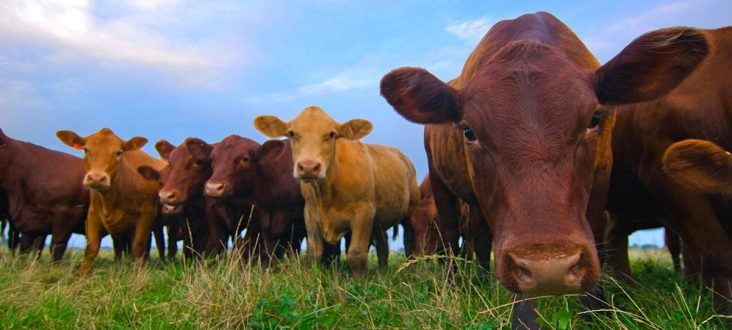U.S. meat production estimates are up, consumption is down
by April 4, 2019 11:00 am 3,052 views

Tyson Foods, Cargill and their competitors are projected to push meat production to record levels this year at 103.3 billion pounds, up 1.3% over 2018, according to U.S. Department of Agriculture estimates. But just because there is more to purchase doesn’t mean consumers will eat more. Per capita consumption is expected to decrease about 1.3 pounds this year to 217.3 pounds.
More U.S consumers are adopting flexitarian diets that limit the amount of animal protein they eat, although that was not the reason cited in the report by Derrell Peel, extension livestock marketing specialist with Oklahoma State University. He said the decrease in per capita consumption reflects improved meat trade and increased meat exports along with normal population growth.
He reports total 2019 meat imports are projected to decrease to 4.3 billion pounds, the lowest since 2013. The U.S. also expects record meat exports of 17.4 billion pounds which include beef, pork, chicken, turkey, veal and lamb.
Beef production is expected to increase about 1.1% this year, to a record 27.2 billion pounds. Peel noted that weather impacts are holding carcass weights well below year ago levels so far this year and annual average carcass weights are projected to only increase slightly year over year. Cattle slaughter is projected to increase by about 1% year over year. In 2019, per capita beef consumption is expected to decrease to 56.8 pounds (retail basis), down from 57.1 pounds one year ago, Peel noted.
The U.S. Department of Agriculture (USDA) reports the hog industry continues to increase capacity and production is expected to rise 27.1 billion pounds in 2019, up 2.7% year-over-year. Consumers are expected to eat an average of 51 pounds of pork in 2019, up slightly from a year ago.
“An improved pork trade balance is projected with year-over-year decreases in pork imports and significant increases in pork exports. Higher projected pork exports are partly due to anticipated increases in pork imports in China as a result of losses in Chinese pork production due to African Swine Fever,” Peel noted.
Broiler (chicken) production estimates have been trimmed from earlier expectations with latest projections of a 1.1% increase to 42.6 billion pounds in 2019. Per capita broiler consumption is projected to decrease fractionally year-over-year to 92 pounds with increased broiler exports taking up most of the increase in production, he added.
Turkey production and consumption are projected to decrease in 2019. Total poultry, including broiler, turkey and other chicken production is expected to be fractionally higher in 2019.
Peel said these projections are made with the best data available at the time. But, there are many other factors that could impact meat production and consumption this year, including weather, disease, trade and U.S. and global macroeconomic conditions as well as feed markets.
